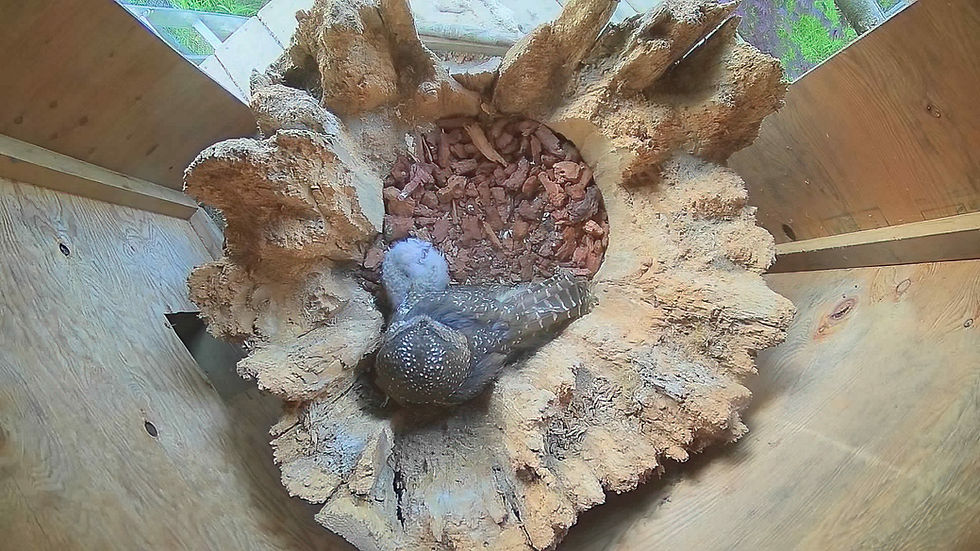Birdscaping Your Outdoor Spaces
- Sep 30, 2021
- 2 min read

ADD BIRDHOUSES – As more trees are getting cut down to allow for urbanization, birdhouses are needed to provide nesting sites and shelter for birds. Just make sure to choose species-specific birdhouses that can also be cleaned every year!
INTRODUCE MORE NATIVE PLANTS – Introducing more native plants increases available habitat and inadvertently increases biodiversity. Check with your local garden centres, nurseries, and/or online to find suitable native plants for your area. In addition, native vegetation is low maintenance compared to their exotic counterparts as they are better adapted to our climate.
KEEP CATS INDOORS – As instinctive hunters, cats cause millions of bird deaths every year when they are let outdoors. If your cat must go outside, outdoor enclosures can be installed so cats and wildlife do not conflict.
LEAVE GARDEN CLEANUP FOR SPRING – Dead trees, fallen leaves, and dried stalks all provide food/shelter for animals to overwinter. Moreover, dead leaves help the soil by preventing against erosion, retaining moisture, and supplying nutrients via decomposition.
MINIMIZE LIGHT POLLUTION –The artificial light confuses birds, disturbs their sleep cycle, and causes collisions. To make our outdoor spaces more bird-friendly, motions detection lights can be installed, or lights can be turned off when not in use.
BIRD-SAFE ANY WINDOWS – Window strikes are common causes of injury. Window collisions can be greatly reduced by installing window blinds and closing them when not in use. Moreover, window decals that reflect UV light can also be installed. Another option is to install window screens like the types that prevent insects from entering the house.
REDUCE THE USE OF TOXIC CHEMICALS – Toxic chemicals like pesticides and chemical fertilizers bioaccumulate in predator species. This build-up leads to poisoning.
Measures Taken at the NSOBP
At the Northern Spotted Owl Breeding Program, with the help of our wonderful volunteers, we are actively removing any invasive species such as the Himalayan Blackberry to allow for native species to regenerate. After their removal, the brambles are kept in piles away from the removal site to create a habitat for insects to live in. We have also planted native species in our planter garden to attract more pollinators as well as left sections of our property fallow to encourage succession.
We welcome all wildlife on our facility. Therefore, one can often see many bird species, squirrels, and coyotes on the property. As a result, birdhouses as well as dead trees can be found around the facility. Most importantly, our aviaries for the northern spotted owls only include native plants they would encounter in their home range. These include: ferns, mosses, and trees in different stages (saplings, snags, logs). Lastly, light pollution is reduced at the facility by turning lights off when not in use and closing the blinds. Window screens are also installed and vertical lines made of tape are placed on any windows that do not have a blind.








